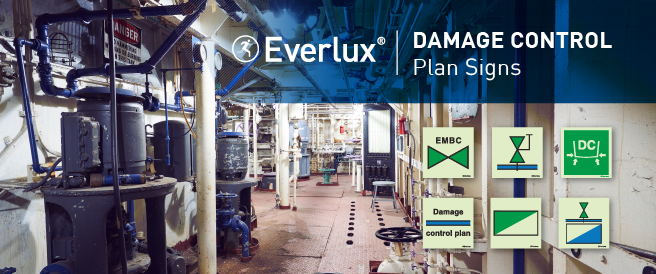Understanding the Essential Role of Damage Control Plans in Maritime Operations |
|
|
|
In the realm of maritime operations, ensuring the safety and integrity of vessels is vital. One crucial aspect of this maritime safety protocol is the implementation of a comprehensive Damage Control Plan (DCP). |
What is a Damage Control Plan?A Damage Control Plan serves as a vital blueprint that provides detailed information concerning various elements crucial for mitigating risks and managing emergencies aboard a vessel. At its core, it offers comprehensive insights into the layout of air pipes across all compartments, precise locations of watertight and weather-tight doors, as well as specifications of tanks, hatches, and other compartments aboard ships. |
Regulatory GuidelinesIn adherence to the MSC.1/Cir 1245 guidelines, vessels must have their Damage Control Plans readily accessible in specified locations. For passenger ships, these plans must be displayed permanently on the navigation bridge and within designated areas such as the ship's control station or safety center. Similarly, cargo ships are required to have these plans accessible on the navigation bridge, within the cargo control room, ship's offices, or other appropriate locations onboard. |
Components of a Damage Control PlanA typical Damage Control Plan encompasses a range of crucial components designed to facilitate effective damage control and emergency response. These may include:

| AIR PIPES LAYOUT: Detailed schematics illustrating the arrangement of air pipes across different compartments, crucial for maintaining ventilation and air supply during emergencies | 
| WATERTIGHT AND WEATHER-TIGHT DOORS: Precise documentation of the location and specifications of watertight and weather-tight doors, is vital for containing flooding and preventing water ingress into sensitive areas of the vessel | 
| TANK AND COMPARTMENT SPECIFICATIONS: Comprehensive information regarding the specifications of tanks, hatches, and other compartments aboard the ship, aiding in the assessment and management of damage in case of emergencies |
|
|
To contribute to the improvement of the guidance provided to the officers in charge of the ship, ISO 17631 introduced the symbols that are to be used to identify all of the components required in Damage Control Plans. |
|
To help you replicating the information on the Damage Control Plan on the actual vessel,Everlux offers a wide range of signs containing the ISO 17631 symbols: |
| | 
| | 
| 
| 
| |
| Damage Control Plan S 15 01
|
| Bulkhead Manual Valve S 15 02 | Bulkhead Valve Control Panel S 15 03 | Damage Control Locker S 15 09 |
|
 | 
| 
| | 
| 
| Waterthight Partition Valves Remote S 15 04 | Manueally Operated Emergency Bilge Suction Valve S 15 05 | Manually Operated Valve S 15 06 |
| Water Valves Control Panel S 15 07 | Swimming Pool Quick Draining Valve S 15 08 |
|
|
Having these signs installed will help the intervention teams to quickly identify all the equipment that will be required to mitigate the damage and to ensure everyone’s safety onboard! |
|
|
|
The implementation of a robust Damage Control Plan is instrumental in enhancing the overall maritime safety and resilience of maritime operations. By providing clear guidelines and procedures for damage control and emergency response, these plans play a pivotal role in minimizing risks, protecting assets, and ensuring the well-being of personnel onboard. |
|
In essence, a Damage Control Plan represents a cornerstone of maritime safety measures within operations. By adhering to regulatory guidelines and implementing comprehensive plans, vessel operators can effectively mitigate risks, respond promptly to emergencies, and uphold the highest standards of safety and security at sea. |
|
Are you seeking further assistance with the Everlux Damage Control Plan Signs or any other maritime safety signs? Reach out to us, and we will be delighted to assist you! |
|
|




















